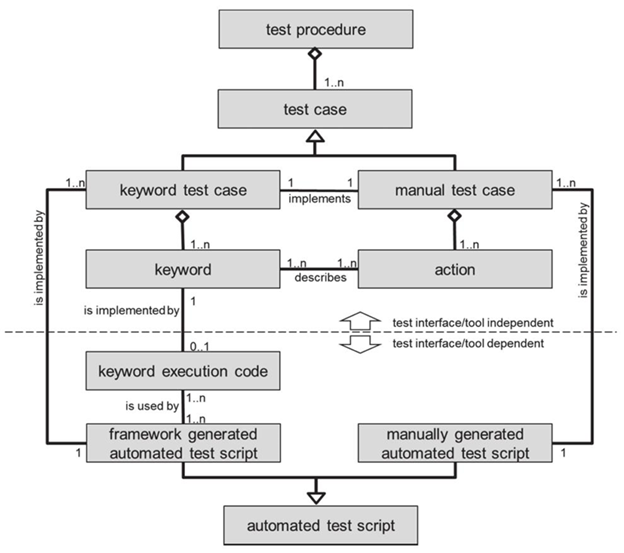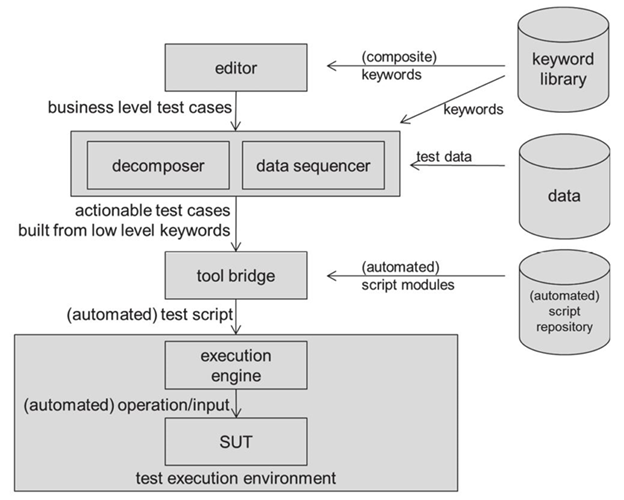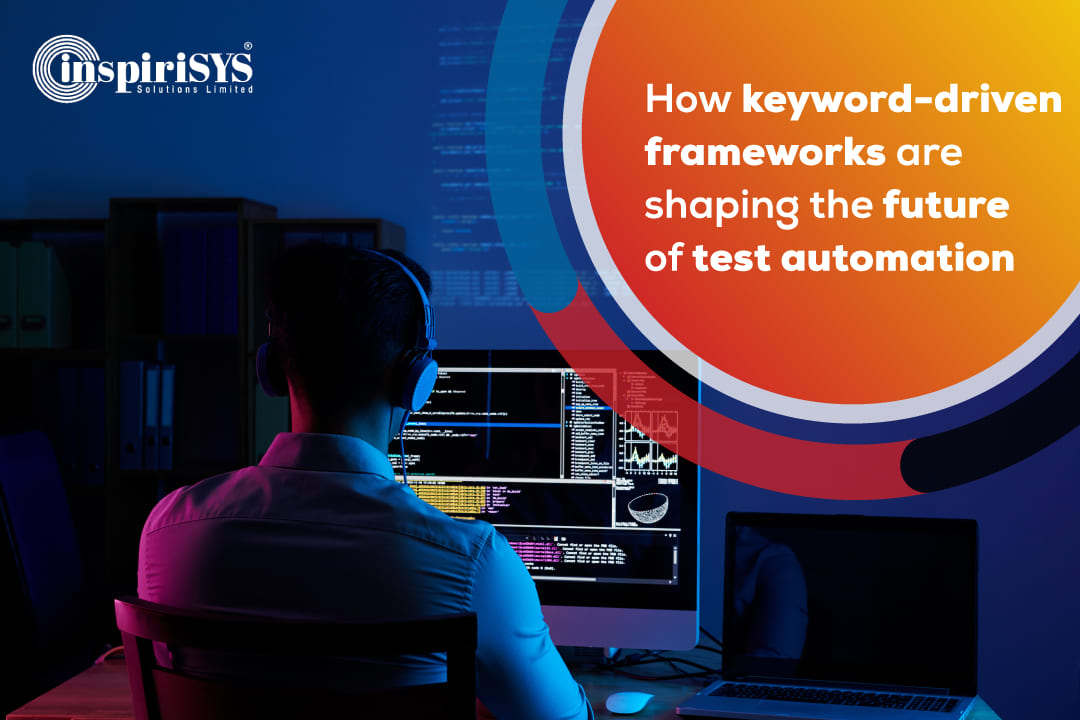Software development companies need to test their software or application before releasing it to end-users. Defect testing is crucial for product success, as it validates an application’s performance, functionality and quality. However, as functionality is added to an application, manual testing becomes laborious and time-consuming. A switch to Test Automation improves efficiency and saves time.
Old Methodologies Give Rise to New
In the last decade or so, new software development paradigms have revolutionized the IT industry. Enterprises have abandoned traditional ways of developing software and have started adopting new agile methodologies. These new paradigms are more responsive to the changing landscape. A fixture of old, the waterfall model, divides software development into distinct, consecutive phases. These are not well-suited for rapid changes in product requirements. It is usually associated with a long product delivery time.
The Rise of Agile Methodologies
Agile development has been hailed as a savior to rescue software development from the problem of slow development issues. In this context, scrum is a framework that emphasizes iterative and incremental software development across cross-functional teams. It addresses the volatility of requirements to enable consistent product delivery in increments. The longer release cycle in the waterfall model keeps testing as a separate phase after implementation. In scrum practices, continuous and iterative testing enables a shorter release cycle.
What is Keyword-Driven Testing?
Keyword-driven testing is a software testing methodology, which is suitable for both automated and manual testing. A set of keywords or action words are used to define individual test cases/actions. Actions like login, click and enter name are pre-defined in the test code using keywords. To maximize test coverage, these keywords may be used multiple times within the same test.
Benefits of Keyword-Based Testing
Keyword-based software testing provides a great level of abstraction. It enables both experienced and inexperienced testers to manage their work in a more compatible and versatile fashion. The testers use keywords to identify functionality, which is more accessible to less experienced testers since it uses keywords and does not need complex coding.
How Does Keyword-Driven Testing Work?
In practice, keyword-driven testing involves a sequence of operations which are recorded in a keyword format. The testers need to drag and drop the relevant keywords to an action to perform testing.
The keywords refer to specific actions defined and used to compose test cases. These keywords lay the foundation for a test case specification. Testers do not essentially need programming or test tool expertise for keyword-driven testing.
High-level keywords are used to create an abstraction layer for individual actions. Composite keywords that are a combination of several keywords are used to describe associated actions. The modularity of using keywords benefits test case maintainability and test case enhancement. When the actions to perform an operation change, a simple change in the keywords allows quick modification.

A keyword test case is made up of one or more keywords, and connects keywords with actions with a mutual 1:N relationship between the entities. Test automation is made possible by implementing each keyword into an executable code, which is used within a test automation framework. This framework generates automated test cases based on keyword test cases.
Layers
The testing keywords can be created representing actions at different levels of abstraction. Domain layer keywords are associated with end-user related or functional actions of the applications. The testing keywords are defined at an abstract level, so they become independent of the technology used in the testing code. It may make it easier for domain experts or business-side employees to create test cases.
Defining keywords on multiple layers makes it easier to manage hierarchical keywords. High-level domain layer keywords can be composed of several low-level keywords.
What is an Automated Keyword-Driven Testing Framework?
An automated keyword-driven software testing framework helps organize activities related to the design and implementation of testing. It includes concepts, documents and tools that facilitate test automation.

The keyword-driven editor can be a spreadsheet application, a stand-alone application or a test management tool. The decomposer is used to transform high-level composite keywords into a sequence of low-level keywords. In contrast, the data sequencer is used in data-driven testing to provide parameters in keyword test cases. The tool-bridge functions as the connection between the keywords and the test execution environment. This bridge receives keywords from the data sequencer. It then calls the appropriate keyword execution code.The test execution environment and execution engine perform the actions associated with the keywords.
The keyword library functions as a repository for keyword definitions. It stores the name and description. The data element represents the external storage of test data and can be a spreadsheet, a database or a test management tool. Finally, the script library helps store keyword execution code for each keyword that performs its actions.
Popular Test Automation tools
There are commercial and open-source keyword-driven test automation frameworks such as Ranorex. These tools empower testers of all experience levels to build and re-use automated tests.
Ranorex
One commercial keyword-driven test automation platform is Ranorex. A flexible, easy-to-use and codeless automation tool, Ranorex Studio is a full development environment. It allows those with basic programming knowledge to build reusable automation modules and combine them to create keyword-driven test cases. The major advantage of using Ranorex is that test engineers can write test cases without writing a single line of code. You can build sophisticated tests with Ranorex Studio's powerful object recognition, capture and replay features. The tool allows you to capture user actions and then add validations. Additionally, it allows you to combine keywords with data-driven testing, global parameters and conditional execution.
These features allow it to be used as a full IDE for test automation. The record-and-replay feature has powerful capabilities that help build tests without programming. However, it is also a full development environment allowing expert testers to script in C# or VB.NET. It is cross-platform, allowing you to run tests on Windows desktop, most Web browsers and Android or iOS devices with the choice of using real devices and emulators.
Ranorex also features data-driven testing capabilities allowing the tester to pull test data from a CSV file, Microsoft Excel file or an SQL database. A flexible API interface enables test engineers to easily add tests to your CI/CD process allowing integrations with Jenkins, Travis Git, and other source control and CI/CD platforms. While not as flexible as most open source frameworks, such as Robot Framework, Ranorex is quite customizable.
Robot Framework
Another powerful keyword-driven test automation framework is Robot Framework. While it is a generic test automation framework, Robot Framework works very well for automating Acceptance Testing. The core of Robot Framework is written in Python. It is best suited for enterprises employing Python for test automation purposes. When used for keyword-driven testing, automated tests are readable and easier to create. Powerful features include deep integration with Selenium WebDriver Library, popular APIs, MongoDB and Appium.
Reduce Programmer Involvement & Cost with No-Code/Low-Code
One important benefit of keyword-driven frameworks is that test automation does not need to rely on programmers. Test engineers traditionally develop test automation scripts in Javascript, Python and other languages. This means that most testers can now handle a good portion of test automation without programming knowledge. However, a programmer may need to be involved in a subset of test cases. This is often for setting up new keywords, which are then used by the testers.
The biggest benefit approach of reduced programmer involvement means reduced costs as programmers are usually expensive.
Standing on the Shoulders of Giants
Most enterprises have complex applications. No test automation framework can cover every scenario. The advantage of developing custom frameworks is that they will be tailored to specific product requirements. KDT automation frameworks can help enterprises build their own comprehensive test automation frameworks using Robot Framework and Ranorex as a base.
Behavior-Driven Testing and Keyword-Driven Testing
Behavior-driven testing (BDT) focuses on the system's behavior rather than on functionality. It helps define what to test and consider acceptance criteria or "done".
In BDT, the starting point is the story. It defines what behavior and functionality the system must have. The stories result from conversations between project stakeholders, business analysts, testers and developers. This methodology provides more traceability and visibility. In contrast, KDT is a way of achieving the BDT approach in testing. KDT frameworks can define the behavior of a system using keywords. The open source Robot Framework supports keyword abstractions, making it a good platform to implement this approach.
Benefits of Keyword-Driven Testing
Maximum Code Reuse – Allows one script to manage the entire implementation process with high reusability while saving time.
Data-Driven – Keyword test automation frameworks extend data-driven testing, allowing test scripts to read test data from any data source rather than hard-coding.
Extendability – New operations or modifications to the system can be made easily. Enterprises can actually extend and customize these frameworks to their needs and build their own tailor-made KDT Automation Framework.
Easy – Creating keyword-driven tests is much easier and faster. Even an inexperienced tester can implement a test.
No-code/Low-code - Test engineers can automate tests on their own with no need for specialized programming skills. This translates into cost savings in terms of programmer time.
Empower Testing Teams with Keyword-Driven Testing Frameworks
The maintenance work for agile teams can be reduced by a keyword-driven testing framework. Keyword reusability and test inputs through a framework editor shift the work from maintaining test cases to keywords.
Keyword-driven testing frameworks use a modular approach to composing test cases with the use of keywords, and this makes them suitable for automation using test automation tools.
InspiriSYS is Your Test Automation Partner
The success of keyword-driven testing frameworks in an organization eventually relies on employing experts who can design, develop and maintain them. Irrespective of where you are in your test automation journey, at InspiriSYS, we are experts at software testing. Our ability to deliver error-free software through quality automated testing is unmatched. Get in touch with us to know more about our test and test automation services.







